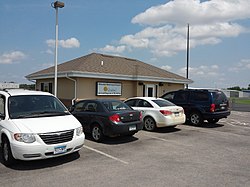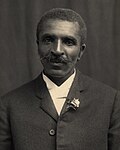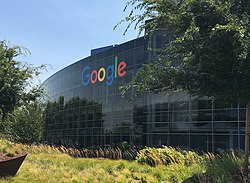Portal:Technology

Technology is the application of conceptual knowledge to achieve practical goals, especially in a reproducible way. The word technology can also mean the products resulting from such efforts, including both tangible tools such as utensils or machines, and intangible ones such as software. Technology plays a critical role in science, engineering, and everyday life.
Technological advancements have led to significant changes in society. The earliest known technology is the stone tool, used during prehistory, followed by the control of fire—which in turn contributed to the growth of the human brain and the development of language during the Ice Age, according to the cooking hypothesis. The invention of the wheel in the Bronze Age allowed greater travel and the creation of more complex machines. More recent technological inventions, including the printing press, telephone, and the Internet, have lowered barriers to communication and ushered in the knowledge economy. (Full article...)
Recognized articles -
Selected picture
Main topics
General images -
Did you know (auto-generated) -

- ... that the Japanese manga series Mink featured futuristic technology even though its creator was unfamiliar with computers?
- ... that the Illinois Institute of Technology Academic Campus has been ranked as both one of the US's most significant architectural works and its least beautiful college campus?
- ... that Justin Yu, the current Classic Tetris World Champion, is also a cellist in MIT's video game orchestra?
- ... that Criccieth Castle combined the "latest advances in military technology" with the "haphazard Welsh castle building style"?
- ... that scholars have described the 1946 book The Failure of Technology as a precursor to the environmental movement?
- ... that the Illinois Institute of Technology created Chicago's smallest park by deeding a 54-square-foot (5 m2) granite slab to the city?
- ... that Kathanar – The Wild Sorcerer is being shot on a custom-built studio spanning 45,000 square feet (4,200 m2), utilizing the virtual production technology?
- ... that Carmel Naughton, having been told that girls were "stupid and couldn't do maths", sponsored a STEM scholarship fund?
Top 10 WikiProject Technology popular articles of the month
Categories
News
'
- December 10, 2025 – Brazil–China relations
- Brazil and China begin constructing a joint laboratory for radio astronomic technology with the Federal University of Campina Grande and the Federal University of Paraíba to support space research as both countries work on the BINGO radio telescope. (Reuters)
- November 17, 2025 – Gaza war
- Germany expects to lift its restrictions on military equipment exports to Israel from November 24, which were banned in August due to the siege of Gaza City. (AP)
- October 28, 2025 – AI boom, Workplace impact of artificial intelligence
- Multinational technology and e-commerce company Amazon announces it will lay off 14,000 corporate positions as it invests more in building AI and cloud computing infrastructure. (DW) (CNBC)
Related portals
WikiProjects
- Parent project
- Related projects
Things you can do

|
|
Associated Wikimedia
The following Wikimedia Foundation sister projects provide more on this subject:
-
Commons
Free media repository -
Wikibooks
Free textbooks and manuals -
Wikidata
Free knowledge base -
Wikinews
Free-content news -
Wikiquote
Collection of quotations -
Wikisource
Free-content library -
Wikiversity
Free learning tools -
Wikivoyage
Free travel guide -
Wiktionary
Dictionary and thesaurus




































































